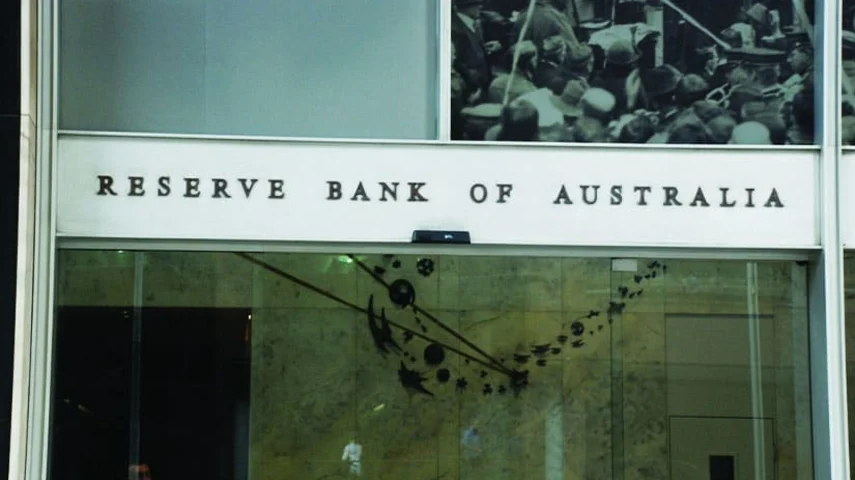RBA cuts rates, but flags productivity woes as key drag on growth



A cautious rate cut signals the RBA will remain gradual in easing, with Australia’s productivity growth, or lack thereof, emerging as a concern for the central bank.
Unlike July’s shock decision to hold the cash rate at 3.85 per cent, the Reserve Bank of Australia (RBA) unanimously voted (9-0) to cut the cash rate by 0.25 basis points to 3.6 per cent, the lowest level since March 2023.
Despite the rate cut, the Reserve Bank signalled a cautious path ahead, with governor Michele Bullock highlighting concerns over productivity growth and warning that the economy cannot sustainably exceed 2 per cent annual growth.
In a first since the pandemic, the central bank downgraded productivity growth to 0.7 per cent per year over the medium term, down from 1 per cent.
In its updated statement on monetary policy, the bank said: “Productivity growth is the key driver of real wages growth in the long run as it allows for wages to increase without the (real) costs faced by firms rising.
“A persistently lower rate of productivity growth will weigh on growth in output, incomes and demand as the economy cannot produce as much as previously expected for a given set of inputs,” the bank warned.
“This will weigh on most types of activity in the economy. For example, households will consume less than otherwise because their incomes are growing at a slower rate, while lower growth in incomes will weigh on tax revenue and therefore public spending.”
As a result, the bank noted, gross domestic product growth will settle at a lower rate than previously forecast over the medium term.
At the post-meeting press conference, Bullock emphasised that the Reserve Bank’s role is to maintain low and stable inflation and full employment, creating a stable environment for businesses to focus on improving productivity.
“The way we grow our living standards is through productivity,” she said, adding that one of the implications of weaker productivity growth is that real wages “can’t grow as quickly”.
Productivity also featured in the central bank’s post-meeting statement, where the bank acknowledged that “productivity growth has not picked up”.
“There are uncertainties about the outlook for domestic economic activity and inflation stemming from both domestic and international developments,” the bank further noted.
The post-meeting statement also showed the bank’s decision to cut rates was largely driven by the ongoing decline in underlying inflation and softer labour market conditions.
As such, moving forward, the bank intends to remain cautious, particularly given the heightened level of uncertainty about both aggregate demand and potential supply.
“The board will be attentive to the data and the evolving assessment of risks to guide its decisions. In doing so, it will pay close attention to developments in the global economy and financial markets, trends in domestic demand, and the outlook for inflation and the labour market,” the RBA said.
Bullock reiterated this message at the press conference, adding that the board does not have “a point estimate for where we might end up”.
“You’ll note that in the forecasts, we have inflation coming back down to target and the unemployment rate remaining where it is with a couple of more cash rate cuts in there, that’s the best sort of guess,” she said, but added that “things can change”.
“The board has to be taking things meeting by meeting and absorbing the data and thinking about what that might mean for whether or not we’re on track to achieve our goals. And that will happen meeting by meeting.”
Bullock was also quick to dash any speculation about an unorthodox or jumbo cut discussed during the August meeting, reiterating that the board unanimously voted on a 0.25 bps cut.
“There wasn’t a discussion of a larger rate cut … it was unanimous,” she said. “All board members were fully behind a 25 basis point [cut].”
Quarterly cuts on the horizon
With the August decision falling in line with expectations, markets and economic commentators are anticipating more cash rate cuts before the end of the year.
Darryl Bruce, executive director capital markets at Income Asset Management, stated the August cut was “more consistent with the board’s stated goal of cutting in a ‘cautious and gradual’ manner”.
“Given that the decision was widely expected, we have seen very little impact on the market thus far,” he said. “Further cash rate cuts are anticipated later in the year but, as always, these will depend on the economic data flow in the coming months.”
Adam Bowe, executive VP and head of Australia portfolio management at PIMCO, said the RBA’s easing cycle is “far from complete”.
“With underlying inflation remaining within the RBAs target band of 2–3 per cent for the past three quarters, the economy growing below trend and rising global risks around geopolitics and trade, the time for restrictive monetary policy has now passed,” he said.
Bowe added the outcome of the August meeting is consistent with PIMCO’s medium term view that the board will continue easing at a “quarterly pace with a destination below 3 per cent next year”.
“The new RBA forecasts are now more consistent with that view,” he added.
AMP chief economist Shane Oliver confirmed AMP expects further cuts in November, February and May, bringing the official cash rate down to 2.85 per cent.
“The RBA now sees the risks around the outlook and inflation as ‘broadly balanced’”, Oliver said. “Nevertheless, it remains cautious about the outlook and its forecast assumes a further ‘gradual easing’ in the cash rate to 2.9 per cent next year.”
“In other words, were it not for the assumption of further easing, it would be forecasting weaker growth, rising unemployment and inflation below the midpoint of the 2–3 per cent target range.
“At the same time, the still tight labour market and poor productivity provide room for the RBA to remain gradual in easing. Overall, we interpret this as consistent with an ongoing quarterly pace of rate cuts for now.”
For his part, Vanguard’s senior economist, Dr Grant Feng, said he expects the RBA to maintain a cautiously dovish stance, with further rate cuts likely to be measured and incremental on the back of supply-side constraints and sluggish productivity growth.
He added: “On balance, we expect the combination of disinflation progress and supply-side constraints will result in the RBA undertaking a cautiously dovish stance, with further rate cuts to 3.35 per cent by end of this year.”
Recommended for you
CPA Australia urges the ATO to extend compliance support for small businesses facing major system changes ahead of Payday Super reforms.
Superannuation funds ramp up collective efforts to counter rising cybercrime, updating standards and sharing intelligence across the industry.
The regulator has fined two super funds for misleading sustainability and investment claims, citing ongoing efforts to curb greenwashing across the sector.
Super funds have extended their winning streak, with balanced options rising 1.3 per cent in October amid broad market optimism.









